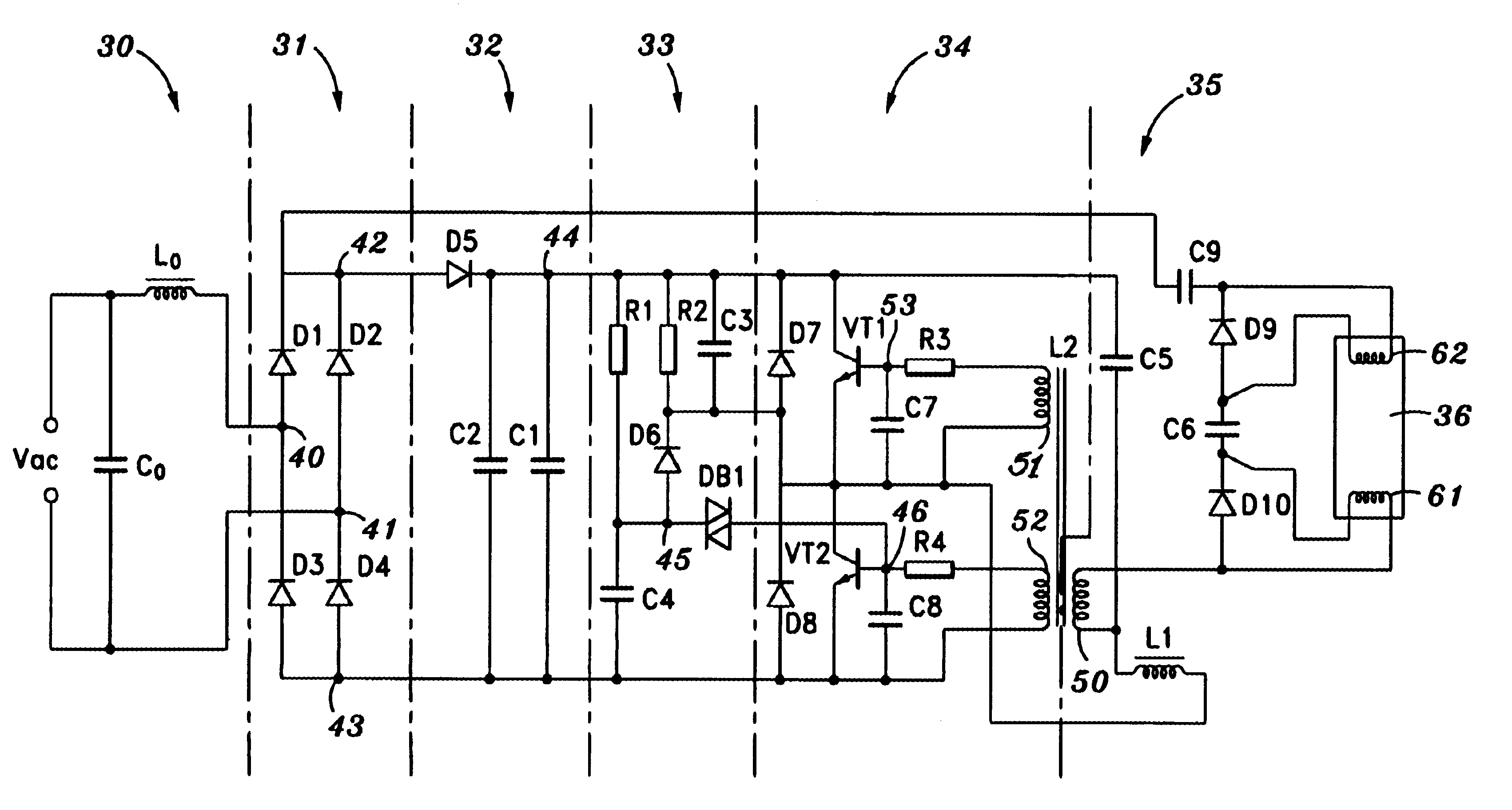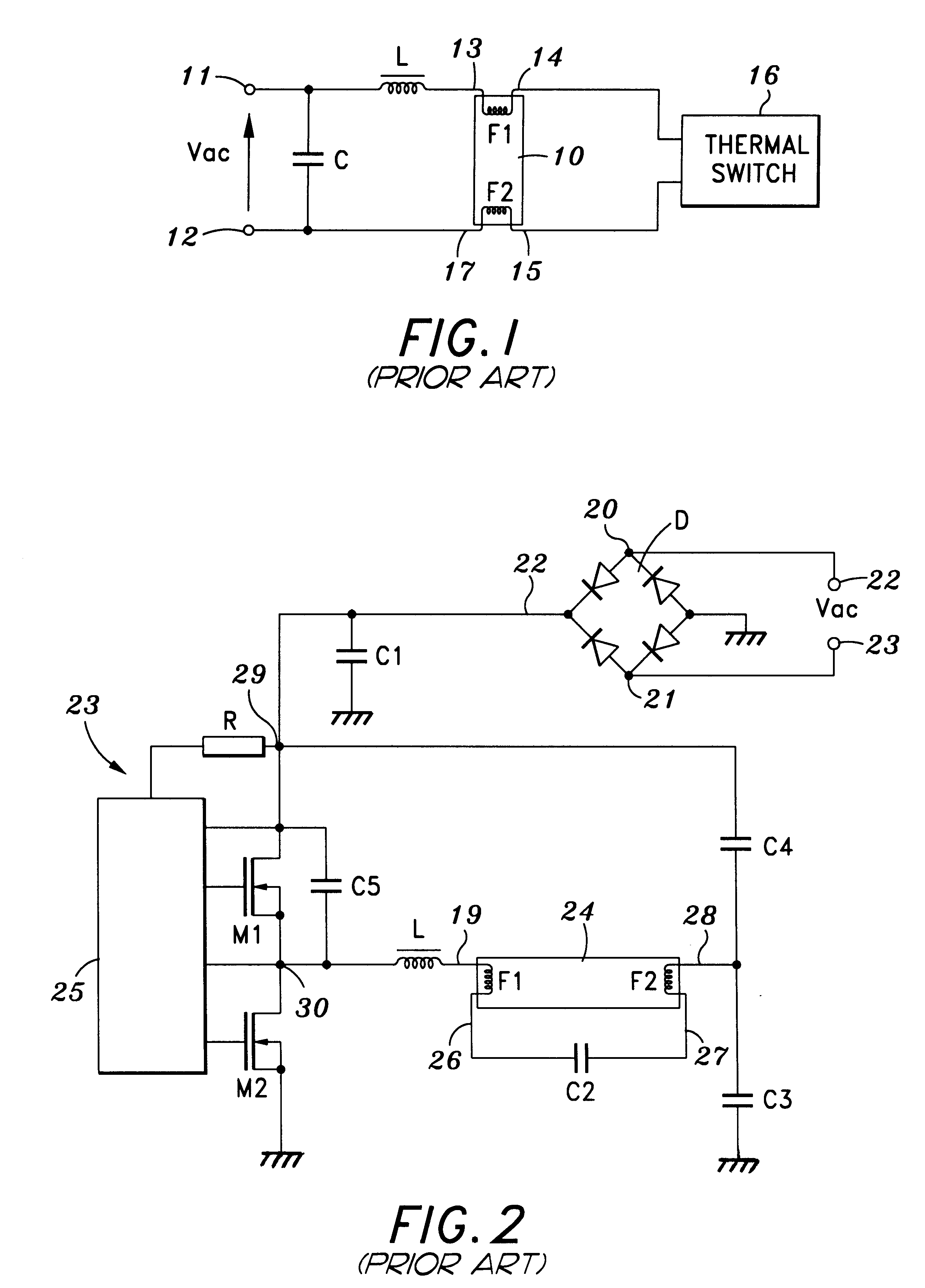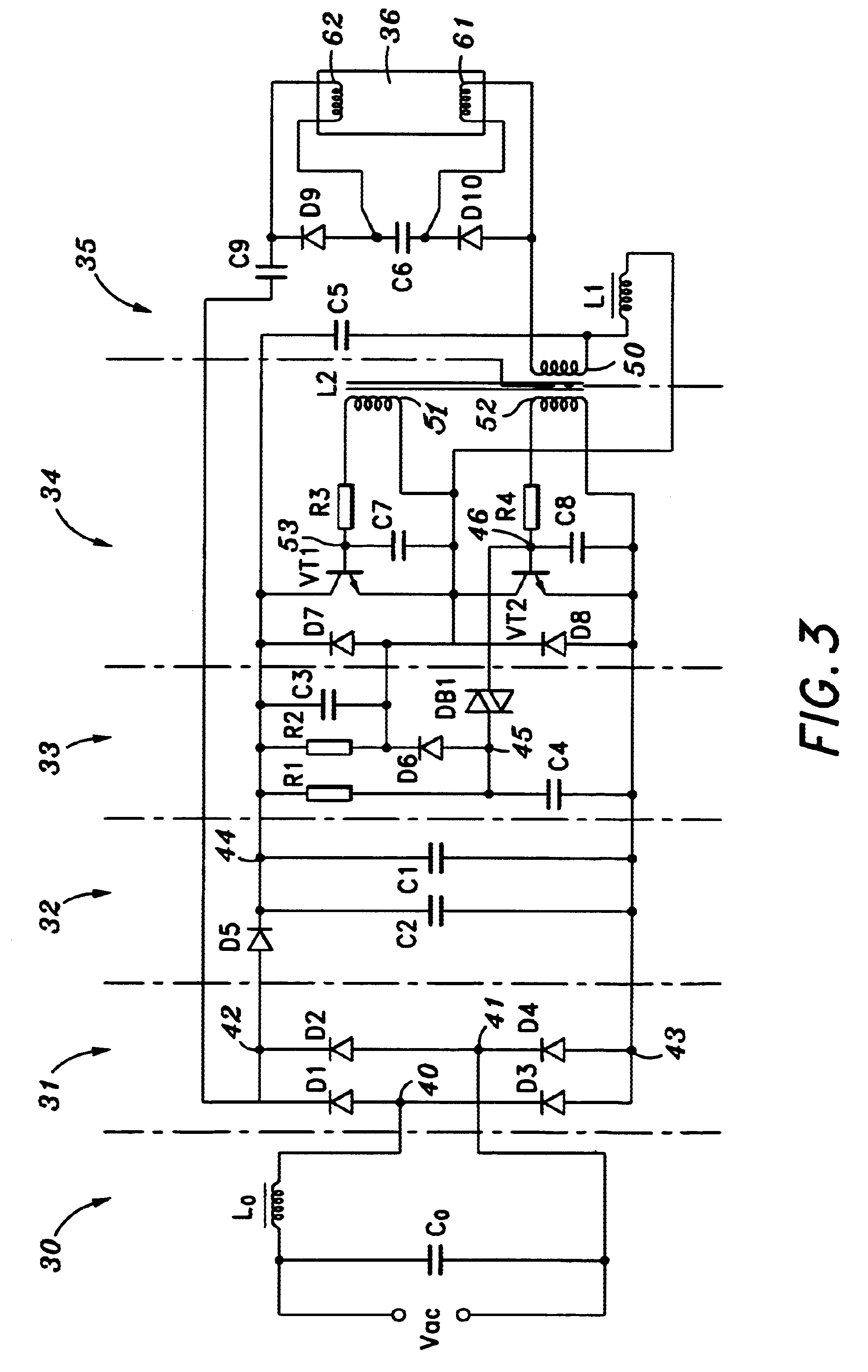Control circuit for dimming fluorescent lamps
a technology for controlling circuits and fluorescent lamps, which is applied in the direction of electric variable regulation, process and machine control, instruments, etc., can solve the problems of reducing the life of the circuit, cumbersome structure, and bulky weight of the circuit,
- Summary
- Abstract
- Description
- Claims
- Application Information
AI Technical Summary
Benefits of technology
Problems solved by technology
Method used
Image
Examples
Embodiment Construction
The present invention constitutes a control circuit or ballast which is used as a current limiting element necessary because of the structure of fluorescent lamps. A fluorescent lamps operates as a voltage limiting component, i.e., the voltage drop across the fluorescent lamp is independent of the input supply voltage. The fluorescent lamp ballast serves three functions. Firstly, it creates a voltage which is sufficiently high to start or otherwise turn the fluorescent lamp on. Secondly, the ballast limits the alternating current to the fluorescent lamp once it has been started. Thirdly, the ballast provides voltage to the filaments of the fluorescent lamp.
An understanding of the preferred embodiment of the present invention can be best gained by reference to FIGS. 3 and 4. The electronic circuit shown in FIG. 3 may be divided into six segments. These consist of an electro-magnetic interference (i.e., an EMI) filter 30, a diode bridge rectifier 31, a direct current power filter 32, ...
PUM
 Login to View More
Login to View More Abstract
Description
Claims
Application Information
 Login to View More
Login to View More - R&D
- Intellectual Property
- Life Sciences
- Materials
- Tech Scout
- Unparalleled Data Quality
- Higher Quality Content
- 60% Fewer Hallucinations
Browse by: Latest US Patents, China's latest patents, Technical Efficacy Thesaurus, Application Domain, Technology Topic, Popular Technical Reports.
© 2025 PatSnap. All rights reserved.Legal|Privacy policy|Modern Slavery Act Transparency Statement|Sitemap|About US| Contact US: help@patsnap.com



